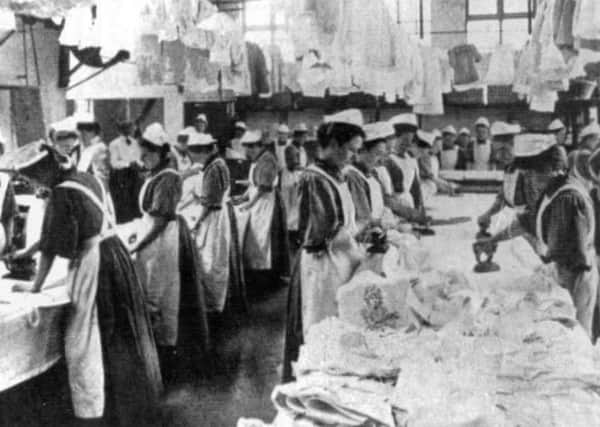The harsh and relentless asylums for Scotland's '˜fallen women'


They were refuges for “fallen women” of Scotland in the 18th and 19th century with prostitutes, single mothers and even socialists admitted to the Magdalene Asylums to be “trained by the habits of industry and sobriety”. At their height the organisation, which operated around the world, had 20 refuges in Scotland.
The first, in Edinburgh, opened in 1797 with the Glasgow branch opening 15 years later. In the capital, the charitable organisation, funded by church collections and private donations, opened in the Canongate in the Old Town, a popular location for street prostitutes. Originally a half-way-house for women coming out of prison, it became a refuge for women wanting to leave prostitution with a good dose of Christian teaching helping them to repent their ways.
Advertisement
Hide AdAdvertisement
Hide AdIn the early 1800s, there were around 200 brothels in Edinburgh with Dr William Tait, who took over the Magdalene Asylum in 1842 and moved it to then leafy Dalry, publishing an account on prostitution in the city. He described three classes of brothels: the first for noblemen, merchants and military officers; the second for businessmen, clerks and theologians; and the third for soldiers, sailors and country folk. Most of the women working in brothels were just teenagers and some were as young as nine or ten, Dr Tait found.
Women were kept in solitary confinement for the first three months “to eradicate the taint of moral contagion”. Behaviour was often cruel, it has been claimed.
A report by William Lothian, a clerk to the Edinburgh Magdalene Asylum, to the Lord Provost of Edinburgh in 1819, says about 40 women would be living there at any one time. Its operation was also supported by payment for work such as laundry and sewing. A chaplain and two superintendents gave daily religious instruction. “The Women are comfortably maintained, decently cloathed (out of part of their own earnings) and have good beds,” the report said.
In Glasgow, the Magdalene Asylum evolved into the Magdalene Institution with a new Glasgow System created to deal with court appearances of women who refused to be checked for venereal diseases by policemen.
Advertisement
Hide AdAdvertisement
Hide AdThe secretive Lock Hospital was also set up in Rottenrow Lane in 1805 to treat women with venereal diseases. Meanwhile, the Magdalene Institute took women who were free from syphilis, not pregnant, newly ‘fallen’ and willing to submit to discipline.
The fifth annual report of the Magdalene Institute, in 1864, said it was of “profound regret and of painful surprise” that the “resorts of profligacy should so much abound” in both Glasgow and Scotland.
With 109 inmates admitted that year, 21 had been restored to parents or friends, 11 to domestic service, eight to warehouses and five to work in mills.
Seven escaped. The report is rich in the language of Victorian class hierarchy.
Advertisement
Hide AdAdvertisement
Hide AdInmates were described as “very low caste” with the victims of prostitution “for the most part, drawn from the very lowest stratum of society.”
“It is gratifying to find that comparatively few have enjoyed the advantages of a Christian home,” the report said.
Some detail is given on the women highlighted as success stories of the board.
These included a 22-year-old admitted in 1862 who fell “before the wiles of an unprincipled villain” who promised her marriage, despite already having a wife. She entered a “house of ill fame” following the breakdown of the relationship before seeking a place in the refuge where her “conduct was exemplary”. After release, she returned to her parents in London.
Advertisement
Hide AdAdvertisement
Hide AdA letter to the institution by the woman later said: “ I may truly say I am a brand plucked from burning.”
In Glasgow, wayward girls were placed at the Magdalene Institute by parents or probation officers until 1958.